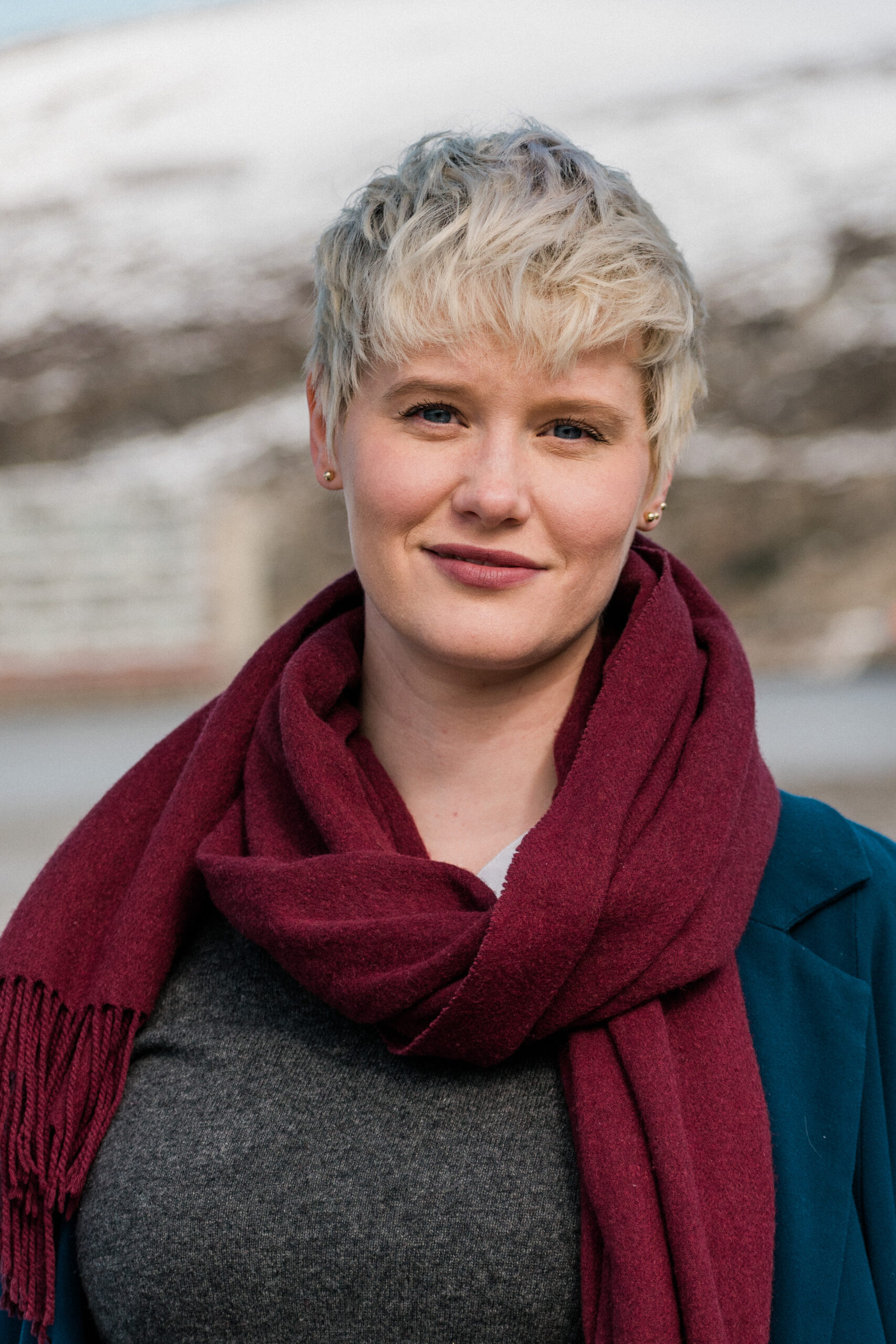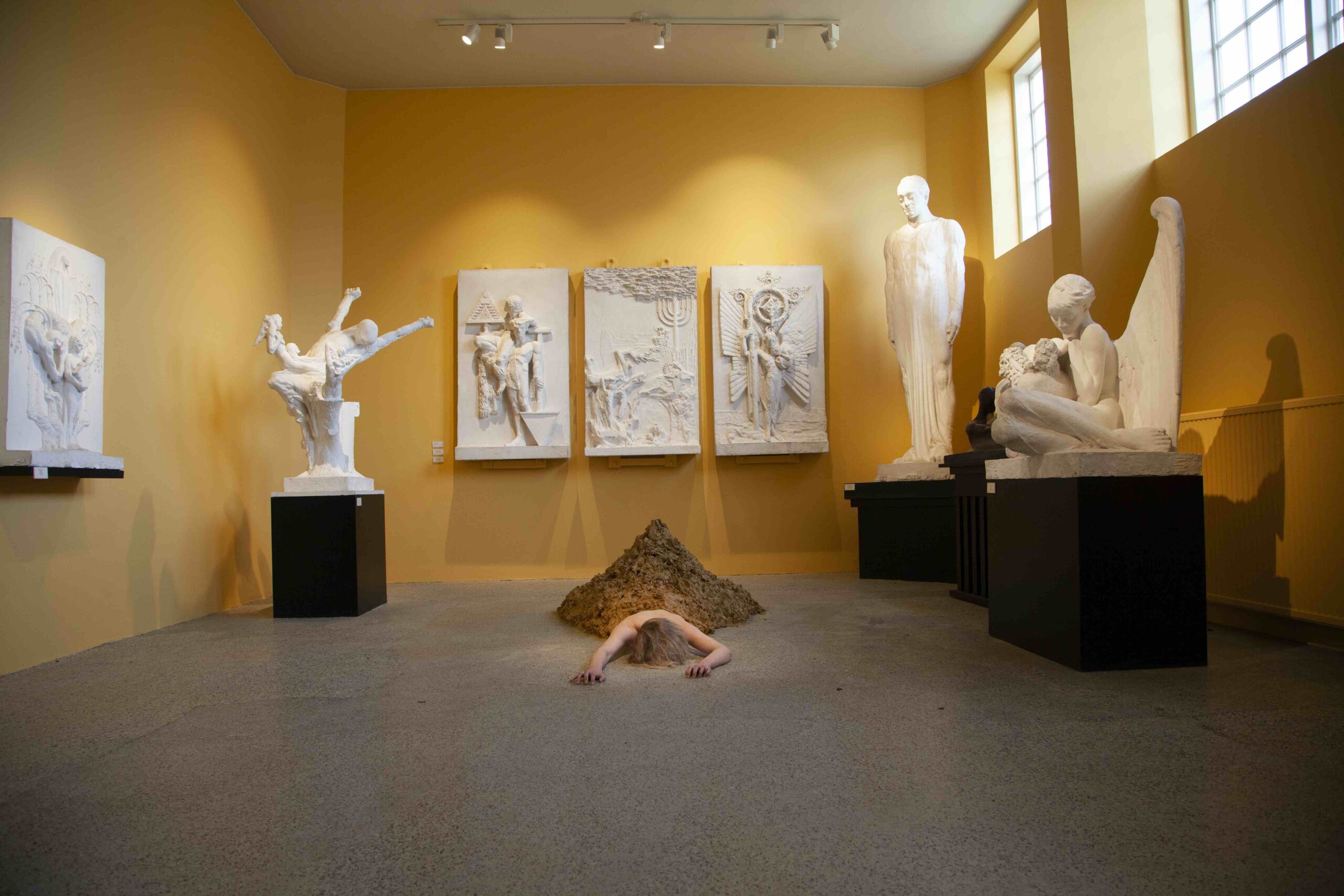May 15, 2024
June 17, 2021
Art as a space to talk about gender and identity
In 2017, Mari Bø worked on how narratives about gender and sexual identity can be explored in performing arts for young audiences in our Creative Europe project PUSH. Bø is now working on the project ERROR:gender.
In 2017, Mari Bø worked with performing artists from several countries on how narratives about gender and sexual identity can be explored in performing arts for young audiences. Bø participated in the artist laboratory "Gender and sexual identity", part of the Creative Europe project PUSH, in which Scenekunstbruket is a partner. Bø is now working on the project ERROR:gender, which had a residency at the Stamsund International Theatre Festival and is currently being performed at the Festival of Northern Norway. Bø says that the PUSH lab has influenced her work with gender and art in recent years.

- Four years ago you attended the PUSH-lab in Edinburgh, which you have said was the start of an interest in artistic work with gender themes. Can you tell us about how it has influenced you?
The lab had good timing for me, because I was very open and ready for new impressions during that period. Before that, I hadn't worked specifically with the theme. At the PUSH lab, we were so different and yet open to researching gender issues together. This started a number of thought processes that I hadn't been through before, and it led me to choose to study gender theory the following year. Even though we had different approaches to and experiences with the topic, we all met on the same team, both professionally and personally. Something was concretized in me in the lab, even though the interest has probably been there all along. And I've discovered that gender topics are an inexhaustible source of inspiration!
If you want to try to change something in society, I believe that art is one way to go about it, it can make people feel something. The foundation that a shared experience provides helps to give people the opportunity to meet each other in a different way. We see that in the ERROR:gender project too.
- After the lab, you went on to study gender theory at the University of Tromsø and took a master's degree in visual arts at Listaháskólí Íslands in Iceland. Can you tell us about your master's project?
Judith Butler is well-known in the field of gender theory, and my master's thesis is largely based on her work. "You don't enter the world as a finished woman or man, but you are shaped into gender norms and gender roles based on the society you live in. These norms are created over time by people repeating the same gendered patterns. I was interested in finding out who I could be outside of these patterns. During my studies, I wanted to explore the nuances of gender in my own body, how my body can be challenged to be different. How do I move, how do I frame my body - and what consequences does that have for how I am "gendered"? When discussing gender with people, it's often said that women and men are different, "we are clearly born different". But biology is also plastic, not just identity. The body is a biological spectrum where not only genitals determine gender, but also reproductive organs, chromosomes, hormones, DNA, bone structure, muscle mass. I found this really exciting, exploring the nuances of gender within my body. At school, I explored ways of looking at the body through different mediums, such as film, visual art, movement and photography.
"I'm a dancer, and this was a master's degree in visual arts with an interdisciplinary focus where I could work with my practice and the theory I chose. For me, it was natural to work with my practice based on gender theory. I focused on the surface of the body, how one sees an exterior, who or what the body tells me, and what the surface hides.

- Can you tell us about the ERROR:gender project?
My stay in Iceland taught me a lot, and after the master's project, I wanted to create a space to expand the conversation to a greater extent, a more conversation-based exhibition that opens up communication between people. It's not necessarily just about expressing your own opinion, but about creating good conversations, discussing in a good way, creating a movement in society to discuss gender roles. We will set up a large dome-shaped tent in the middle of Harstad city center! There we will create a hub that will be the center of events with gender, body and sexuality as themes. 11 artists will contribute material to the exhibition, which will run for seven days.
- What kind of strategies do you use to bring your audience into your hub?
We work hard to ensure that it's not just art people who stop by. We have facilitators who work in the hub every day and can welcome curious people. As the event is outdoors, there will probably also be some people who pop in casually. Here is a safe space where you can relax. You won't be thrown straight into a conversation about gender, but the artworks inside can help create conversations you might not otherwise have. We have audio, video, books, conversation cards and line dancing. You don't have to participate or engage, but the opportunity is there. Just being there in that space is part of the conversation too. It's not just voices to be heard, but a reflective space, where you can also contribute something of your own, create dialog.
- This sounds like something that would be relevant to present to young people?
Yes, we wanted young people to be involved in the project all the way, but COVID-19 has made it difficult this year. Gender norms are set so early for children and young people in several areas. We know of children as young as 8 being exposed to sexualized films, for example, and this can quickly affect how you view your own body, your own gender and how you interact with other bodies. If an understanding sets in that you are dependent on other people's bodies to understand your own, it's scary and we need to address it. I have previously held several workshops for the Cultural Rucksack that have dealt with gender, and then I have had conversations with children in 6th and 7th grade. We're happy to work on the project for a younger audience, and hope to be able to present it to a young audience in Harstad too.
And you want to try to meet people from all walks of life, adults and the elderly, this concerns everyone. For example, in the tests we met a 65-year-old man who had never talked about this. It was such a great conversation because he was genuinely embarrassed and open about the topic.
All we really want is room for more people.